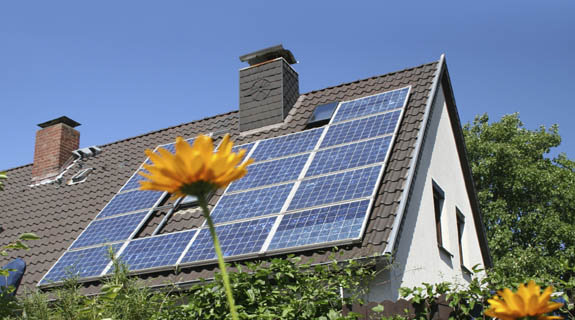Photovoltaic power: the pros and cons
Money may not grow on trees, but free energy beams out of the sun every day. Unfortunately, it’s nowhere near free to harness— so that money tree would really be handy. Andy Kenworthy weighs up the pros and cons of photovoltaic power
Aliens are probably laughing their tentacles off at our approach to energy generation. We spend our days fighting wars over a dwindling supply of black sludge, beneath our very own giant, free fusion reactor.
Many homes in New Zealand have 20 to 30 times more solar energy hammering down on them each year than their owners use in electricity or gas. We’ve finally come as far as developing photovoltaic (PV) cells to convert this energy into electricity—but they’re not cheap. The average Kiwi household uses almost eight kilowatt hours (kWh) of electricity per person per day. The Energy Efficiency and Conservation Authority calculates that PV panels to supply this much power would cost between $60,000 and $170,000, so reducing our power use should remain top priority.
Of course, you can always generate some of your own power and take the rest from the grid. If every New Zealand home had a 3kW solar panel array, the country could generate enough power to satisfy more than a quarter of its residential electricity needs—enough to shut down the Huntly coal-fired power station.
The numbers
As technology advances, costs fall and the efficiency of the panels increases, a solar-powered future looks increasingly viable. But for now, when you take into account the costs of installation and maintenance, and even once you’ve negotiated with your energy company to sell power back to the grid, you will almost certainly pay more for solar electricity than for mains power. And whether the full value of your system can be added to the cost of your house will depend on the potential buyer.
The overall environmental benefits of having your own PV system are difficult to quantify. Still, you’ll be removing load from the grid at peak times, reducing pressure on our hydroelectric systems, and you won’t be creating demand for new wind farms, which are regarded by some as blots on the landscape. Your personal power generator will also bestow the thrill of selfsufficiency and a comforting resilience.
The dark side
There’s no such thing as free electricity, either economically or environmentally. Manufacture of the glass, plastic and metal fittings in PV systems uses energy, water and a wide range of metals and chemicals. Some of these are toxic or hazardous—cadmium, for instance, has a tendency to accumulate in the food chain.
The resulting PV cells are generally good for about 20 years. Although PV panels are more or less benign during use, their disposal is also problematic. Recycling programmes are being developed, and some manufacturers will take back old panels to recover the more valuable materials.
There are some other, unavoidable, limitations for those not connected to mains power. Because PV cells produce power only during the day, and relatively little when it is cloudy, even the most frugal electricity user will need some sort of backup to avoid being left without power from time to time. Other renewable generation options like wind can help iron out the peaks and troughs, but lead acid batteries containing sulphuric acid are the most useful option for most people living off-grid. (Nickel-cadmium batteries are less common and much more expensive, but last longer.) Depending on the system and how it’s maintained, the batteries you use will last somewhere between three and 15 years.
The paperwork
Building or resource consents may be required for PV systems that penetrate the roof or are considered by neighbours to affect their property. Gridconnected PV systems need to be agreed to by both the lines company (for the connection) and the electricity retailer (for pricing arrangements). And you’ll need to get an installer who knows what they are doing, as the system must meet the AS/NZS 3000:2007 electrical installations wiring rules.







